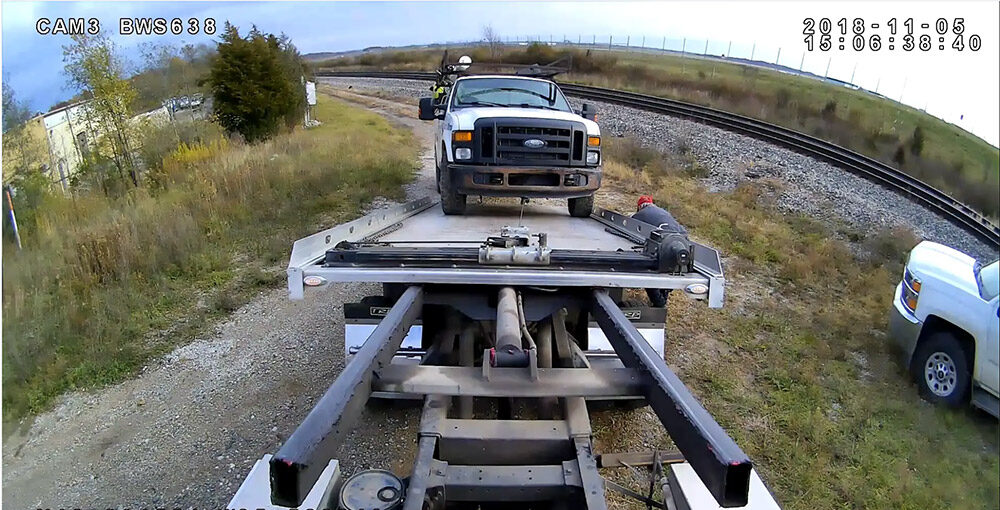Benefits of Using Video Recording on Tow Trucks

Driving a tow truck is a dangerous business.
According to a report published in February by the National Institute for Occupational Safety and Health (NIOSH), working in the towing industry comes with a 15 times greater risk of experiencing an on-the-job fatality compared to all other U.S. private industries combined.
From working on the side of dangerous roads to dealing with customers who might not be happy to see you repossessing their vehicle, using a video recording system on your tow vehicles can help you improve safety and reduce liability while on the job.
If you’ve never thought about using video recording systems on your tow vehicles – or if you’ve thought about the idea but haven’t followed through – here are some key benefits of using a video recording system on your tow vehicles:
Prevent False Claims
For many tow truck operators, fighting false claims is one of the biggest obstacles they face in their line of work. With a video recording system – such as a commercial-grade dash camera or multi-camera video recording system – you can fight false claims with the video evidence these systems capture.
For example, if you were accused of damaging a vehicle during a tow and you know you didn’t, that claim could easily be proven wrong if you had video footage that proves you didn’t damage the vehicle.
Proving false claims doesn’t stop on the scene, as video recording systems can capture constant video of your vehicles while they are out on the road. For added simplicity and liability coverage, some systems automatically pull out event video footage – such as when a collision happens or each time a tow is activated – from that constant video for quick review.
This can help you prove if your driver is at fault for a driving incident, or if someone is just making up a story because they saw a name on the side of the truck and though they get some money out of making a false claim.
Driver Safety & Training
Building off the previous point, video recording systems can improve the safety of both your drivers and of others on the road by using these systems to train your operators on better driving habits.
For example, if you are using a video recording system that can track how fast the vehicle is going and it can mark an event each time an operator goes over the established limit, you can use those alerts to educate and correct the issue with the offending operator.
If after that conversation your operator has few to none speed alerts, then you can rest a little easier knowing your operator has improved. If there’s no improvement after that, you might be looking for a different operator who won’t be as much of a liability.
If there’s no improvement after that, you might be looking for a different operator who won’t be as much of a liability.
While video recording systems can be used to identify opportunities for training, they can also be used to reward your drivers who practice safe driving habits each and every day.
Maybe you give a gift card to the operator who has exhibited the safest driving habits each month. Maybe you give a yearly bonus to the operator who had no driving incidents throughout the entire year. Whatever method you choose, you can use you video recording systems to not only identify and correct bad driving habits, but to reward your operators for good driving habits as well.
Fleet Management
While much of the focus of using video recording systems has been on the footage captured by the systems, pairing that video with fleet management software can help you efficiently manage your entire fleet.
Some video recording system vendors offer additional fleet management software packages that can help you do such things as:
- See real-time views of where your vehicles are located
- Access live footage being recorded on your vehicles
- Get instant alerts for driving incidents or accidents
- View historical route histories for your vehicles
So how do these things help manage your fleet?
Let’s look at the example of seeing in real time where your vehicles are located.
If you know exactly where your vehicles are when you get a call for a tow, you can use that software to find the operator that is closest to the location and send them out to the scene. This ensures that your customers are getting the quick service they expect from your company. By finding the closest driver to the scene, you can also save on your bottom line as you’re not wasting fuel by having an operator on the other side of town respond to the call.
This is just one example of how pairing video recording systems with fleet management software can help you increase safety and productivity across your entire fleet, but the possible benefits of pairing the two solutions together are vast.
Conclusion
Having discussions on using video recording systems or fleet management software to improve safety and reduce liability across your towing fleet? Then maybe it’s time for you to see what video recording solutions and fleet management software we offer here at Pro-Vision.